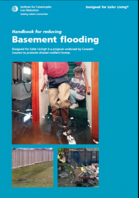|
|
|
The Institute for Catastrophic Loss Reduction
Toronto Office 20 Richmond Street East, Suite 210, Toronto, Ontario M5C 2R9 Tel: (416) 364-8677 Fax: (416) 364-5889 London Office Boundary Layer Wind Tunnel Laboratory Western University 1151 Richmond Street, London, Canada N6A 5B9 Tel: (519) 661-3234 Fax: (519) 661-4273 |
|
This Website was created with federal funding support through Natural Resources Canada’s Regional Adaptation Collaboratives Program |
|
